Satin is a weaving technique that creates a glossy surface with long floating yarns. Polyester is a synthetic fiber material made from petroleum.
Polyester is more durable and easier to care for, costing $3-$ 8 per yard. In contrast, satin, especially silk satin, offers luxury and shine but requires gentler handling and costs $15-$50 per yard.
Understanding the difference between satin and polyester will help you make smarter fabric choices.
Key Takeaways
- Satin is a weaving technique that creates a glossy surface. Polyester is a type of synthetic fiber material.
- Satin can be made from various materials, including polyester. Polyester cannot be made into different fiber types.
- Polyester is more durable and easier to care for. But satin requires gentle handling to maintain its delicate finish.
- Satin typically feels smoother and more luxurious. But polyester has a more practical, synthetic feel.
What Is Satin? Understanding the Weave Pattern
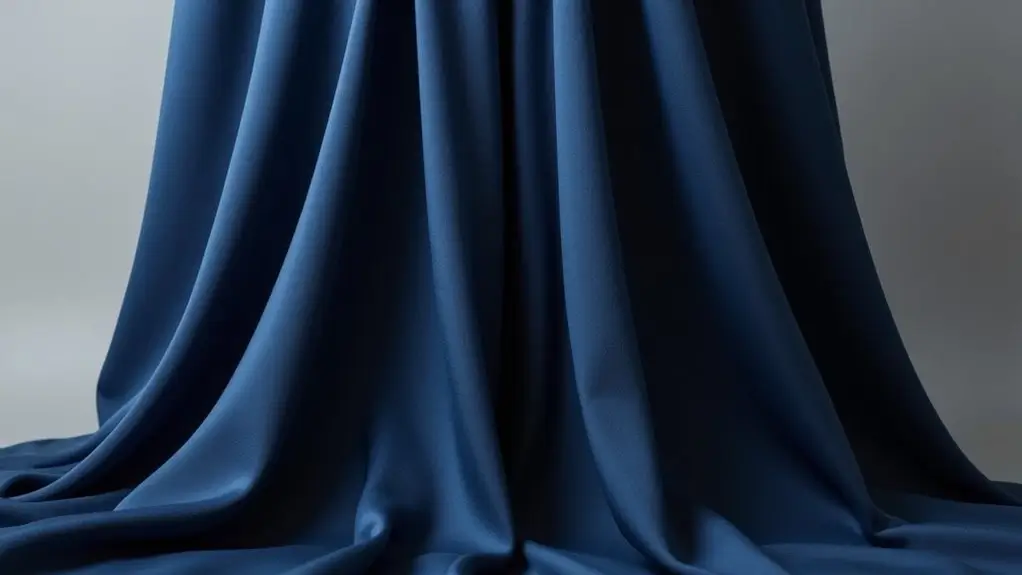
Satin's shiny look comes from its special weave. Long yarns float to create a smooth, glossy surface on one side. This weave has four or more weft yarns floating over one warp yarn, and four warp yarns floating over one weft yarn.
Unlike polyester, satin is a type of weave. It can be made from various materials, including silk and synthetic fibers.
When you look at satin under magnification, you'll notice that the weaving technique creates a pattern. The threads skip over multiple yarns before going under a single one.
This satin weave is what gives the textile its famous glossy appearance and soft drape.
While polyester satin exists, traditional silk satin remains the most luxurious type.
Polyester: A Synthetic Fiber Explained
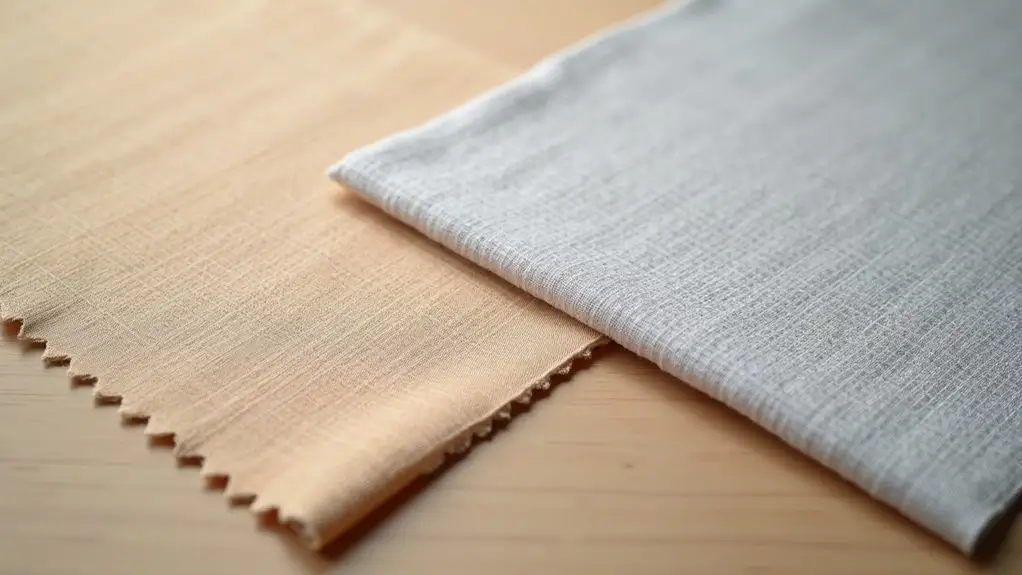
The synthetic revolution of polyester began in 1941. British chemists created this versatile artificial fiber from petroleum-based chemicals. These fibers are then spun into yarns, which are used to create various types of polyester fabrics.
This type of fiber is in everything from clothing to home furnishings. This is thanks to its remarkable durability and easy care to maintain.
| Characteristic | Description |
|---|---|
| Composition | Petroleum-based synthetic fabric |
| Durability | Highly resistant to wear and tear |
| Maintenance | Machine washable, quick-drying |
| Environmental Impact | Non-biodegradable, releases microplastics |
Unlike natural fibers, polyester is manufactured through a chemical process. Polyester woven in a satin pattern can copy the shiny look of satin while keeping its practical benefits.
Durability and Care: Difference Between Satin and Polyester
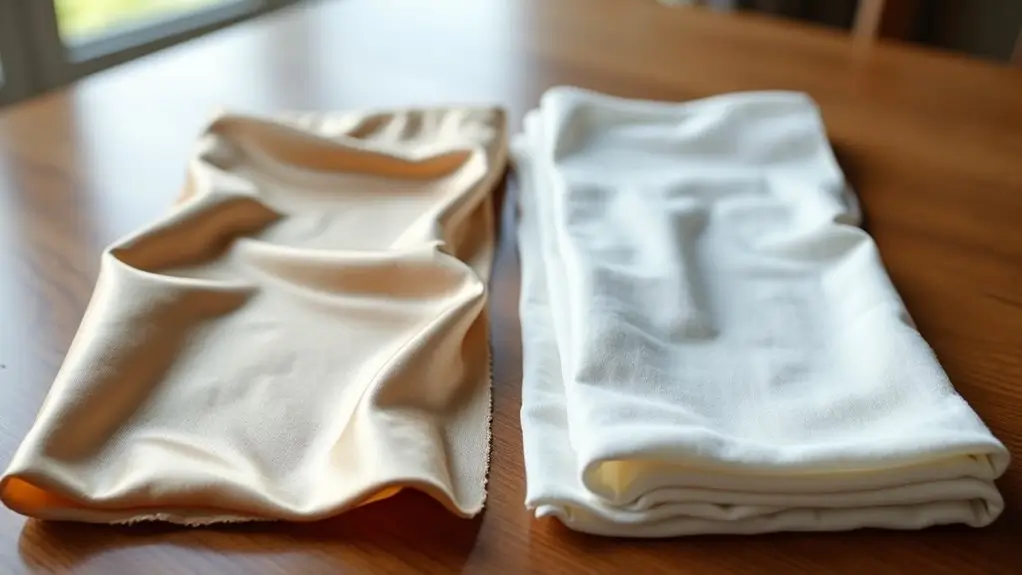
When comparing fabric longevity, polyester stands out as considerably more durable. It lasts through years of regular wear and washing without losing its shape or color.
The synthetic materials in polyester make it resistant to tears and stretching. In contrast, satin's delicate weaving technique requires gentler handling.
You'll find the care requirements for polyester quite straightforward. Just toss it in the washing machine with items of a similar color.
Satin, however, often needs special maintenance. It requires hand washing or dry cleaning to preserve its lustrous finish.
Polyester isn't as breathable or comfortable as satin. But its durability and easy care make it a practical choice for everyday wear.
Cost Differences and Value Considerations
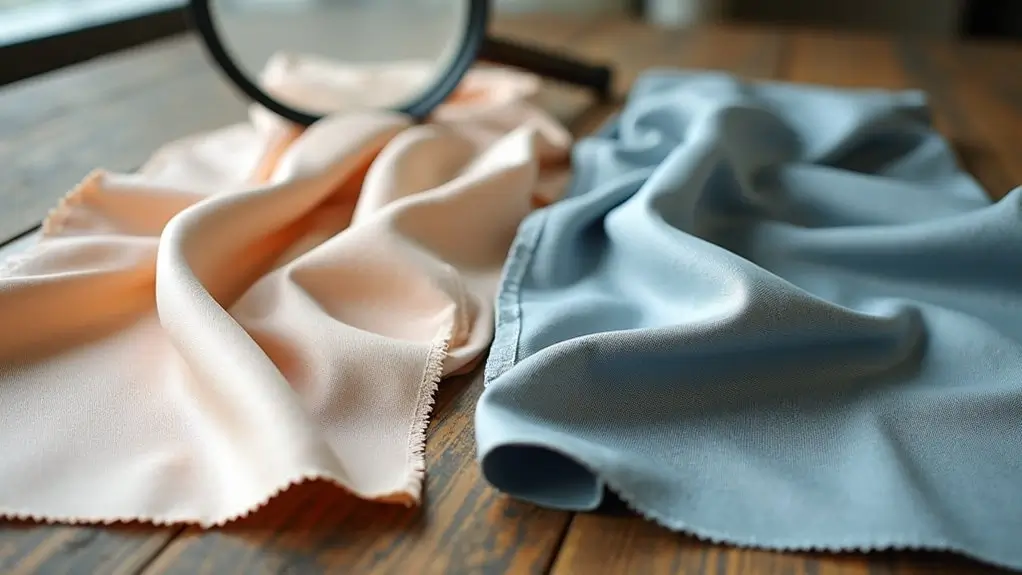
Price points between these fabrics reflect their distinct manufacturing processes and material costs.
Polyester is a synthetic fabric. It's generally more affordable since it's mass-produced from petroleum-based materials. Regular polyester fabric typically costs $3 to $ 8 per yard. Basic polyester satin starts at $5 to $12 per yard.
High-quality satin fabric, especially when made from natural fibers like silk, commands premium prices ranging from $15 to $ 50 per yard.
Satin costs more upfront. But its luxurious and elegant look can be worth it for special occasions.
Think about your needs for durability, care, and environmental impact when comparing these costs.
Comfort and Breathability Features
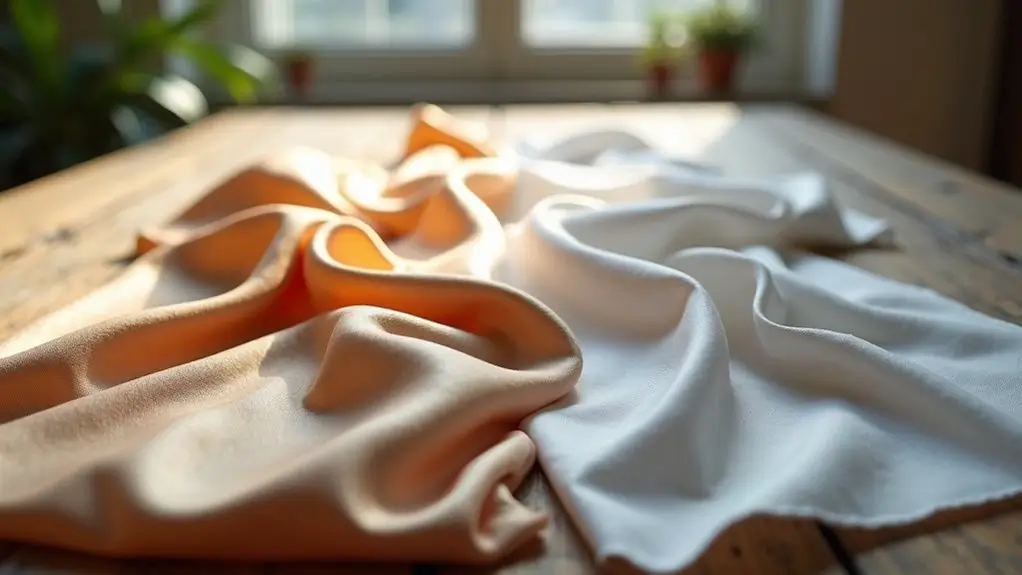
Comfort directly impacts how you'll feel wearing these fabrics. So understanding their breathability differences is essential for making the right choice.
Satin, especially when made with natural fibers, offers superior breathability. It provides a luxurious feel against your skin. This is due to its unique weaving technique.
Polyester, being a synthetic material, typically doesn't breathe as well as natural fiber satin.
But if you consider polyester satin, the texture of this type of fabric is smoother. It's less breathable than natural satin. This makes it better suited for cooler weather. It's also ideal for situations where breathability isn't your primary concern.
Different Uses for Polyester and Satin Fabrics
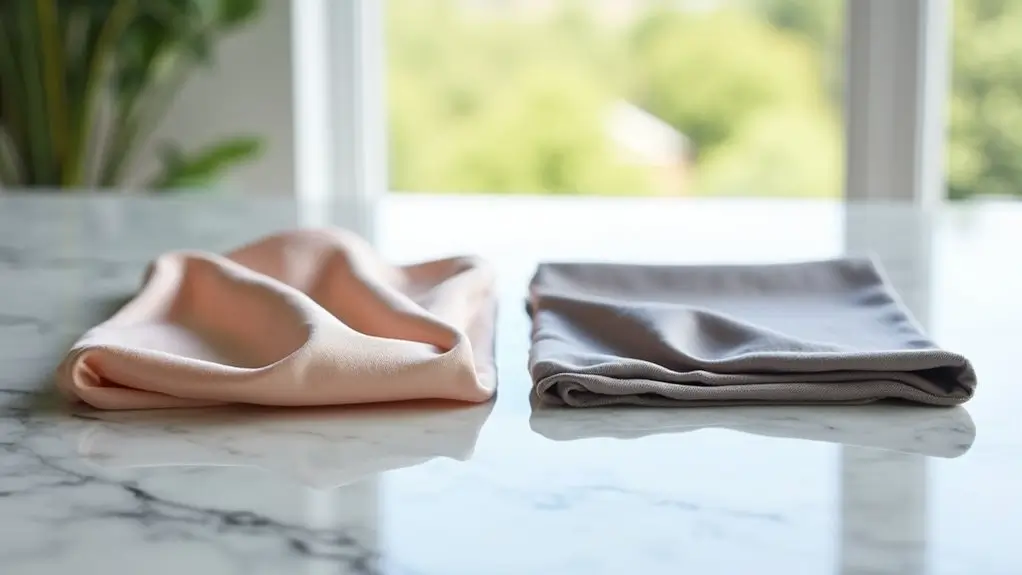
Understanding the best uses for satin and polyester helps you select the right fabric for your projects.
Uses for Satin
- Formal Wear: Satin is the top choice for evening gowns, bridal dresses, prom wear, and other formal attire. The luxurious appearance enhances the overall look of special occasion garments.
- Luxury Bedding: Satin pillowcases, bed sheets, and duvet covers offer a soft, cool feel that benefits hair and skin. Its sheen adds a high-end look to bedroom decor.
- Lingerie and Sleepwear: Satin’s softness is ideal for delicate lingerie and nightwear.
- Accessories: Satin is often used in scarves, ribbons, ties, and handbags to achieve a glossy look.
- Decorative Items: Satin is popular in home decor accents such as curtains, cushions, and table runners. This is due to its sophisticated sheen.
Uses for Polyester
- Everyday Clothing: Polyester’s durability and easy care make it excellent for casual wear. You'll find it in T-shirts, blouses, pants, and children’s clothes that need frequent washing.
- Sportswear: Polyester’s moisture-wicking properties and resistance to stretching fit activewear.
- Outerwear: Polyester is widely used in jackets, raincoats, and windbreakers. This is because of its resistance to water and wind.
- Home Furnishings: Polyester textiles are common in upholstery, curtains, bedding, and cushions. This is due to their strength and stain resistance.
- Industrial and Commercial Use: Polyester is used in items such as bags, tents, tarps, and safety gear. This is because of its toughness and low cost.
Environmental Impact and Sustainability
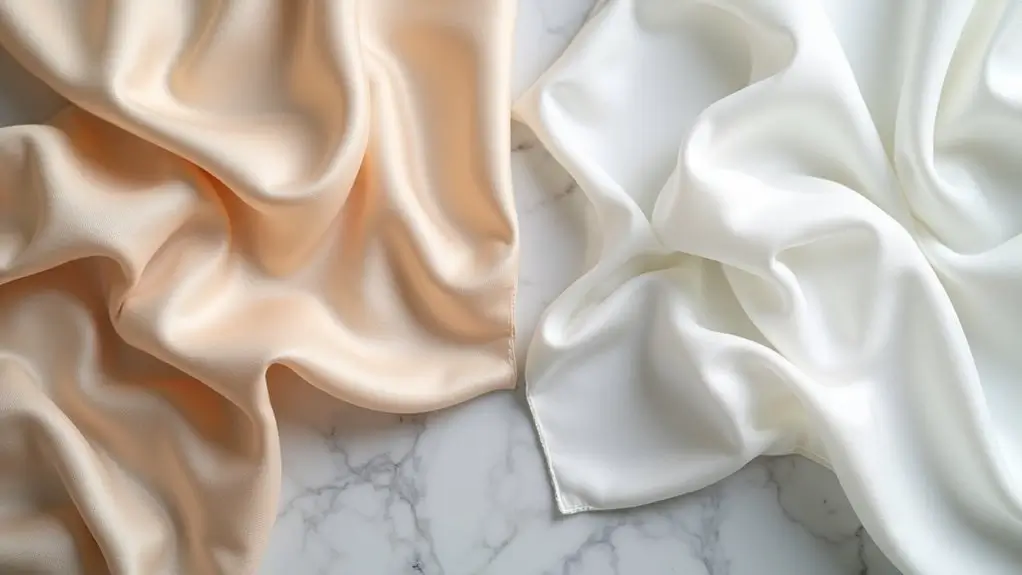
The environmental footprint of your fabric choice extends far beyond its comfort and wearability. When choosing between polyester and satin, it's essential to consider their environmental impact.
- The production of polyester generates significant greenhouse gas emissions and is not biodegradable. But recycled polyester options are improving.
- Natural fiber satin, especially silk satin, breaks down more easily in the environment.
- Synthetic materials like polyester contribute to microplastic pollution in our waterways.
- While silk satin requires more careful maintenance, it's more sustainable than polyester satin.
Natural fibers generally offer better environmental benefits. But they often come at a higher price point.
Choosing Between Polyester and Satin for Different Uses
When choosing between satin and polyester, your intended use should be the main factor.
The characteristics of satin make it perfect for formal wear and luxury bedding. In contrast, polyester's durability and easy care make it suitable for everyday clothing.
- Choose satin when you need an elegant drape and a luxurious sheen. It's ideal for evening gowns or special occasion garments.
- Pick polyester when you need fabric that is suitable for regular wear. It works well for workout clothes or children's outfits.
The differences between polyester and satin become most apparent in their practical applications.
Conclusion
Satin is a weave pattern that can actually be made from synthetic materials. In contrast, polyester's a versatile synthetic material.
When you're shopping, consider your project's specific needs for durability, comfort, and care requirements. Whether you're creating formal wear or everyday items, you'll know exactly which fabric will best serve your needs.
Learn more fabric knowledge on the Longan Craft Blog, and dive into the fabric world with Longan Craft!
FAQs
Can Satin and Polyester Fabrics Be Successfully Dyed at Home?
Polyester is difficult to dye at home since it resists most dyes. While satin can be dyed, its success depends on the type of fiber used. Natural fiber satin takes dye better than polyester-based satin.
Do Satin or Polyester Fabrics Pill More Quickly When Washed Together?
Polyester typically pills more than satin. But if your satin is made from polyester fibers, you'll see similar pilling rates. It's best to wash these fabrics separately.
Which Fabric Performs Better for Winter Clothing Insulation?
Polyester performs better for winter insulation since it's specifically engineered to trap heat. Satin's smooth weave doesn't provide much warmth. But polyester's synthetic fibers create effective thermal barriers in cold weather.
Can You Embroider Equally Well on Satin and Polyester Fabrics?
Polyester is easier to embroider on since it's more stable and durable. You can embroider on satin. But it's trickier and requires backing to prevent puckering and damage.
Does UV Exposure Affect Satin and Polyester Differently Over Time?
Polyester holds up better in UV light, though it can yellow over time. Your satin's durability against sun exposure depends on its fiber content. Silk fibers fade faster than polyester fibers.


0 comments